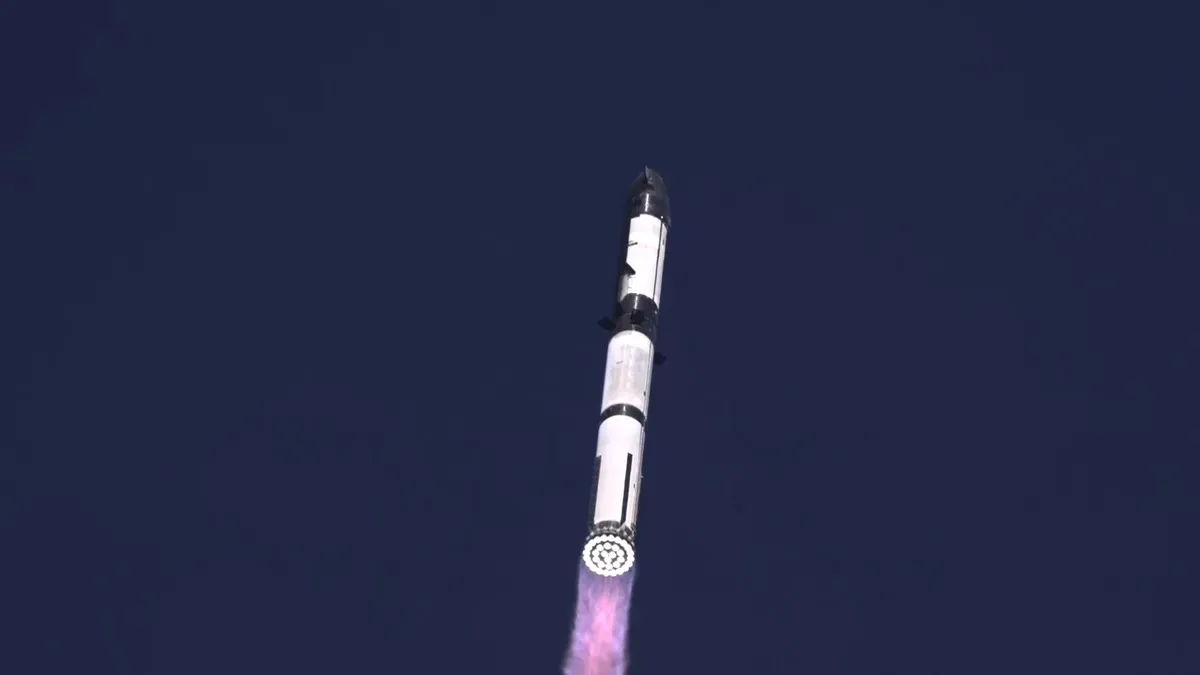SpaceX cleared to launch first Starship test flight after two explosive failures
Regulatory Clearance Follows In-Depth Safety Review
SpaceX has received a green light from the U.S. Federal Aviation Administration (FAA) to proceed with the ninth test flight of its next-generation Starship rocket. The authorization follows a comprehensive review process focused on understanding and resolving the issues that arose during Starship’s previous flight.
The FAA announced the return-to-flight decision on May 22, 2025, marking a major milestone for SpaceX’s continuing efforts to develop a fully reusable super heavy-lift launch system. This authorization clears the way for Starship Flight 9 to take to the skies, continuing SpaceX’s methodical approach to testing and refining its launch vehicle.
A Look Back at Flight 8 and the Anomaly That Grounded Starship
The most recent Starship test flight, designated Flight 8, launched on March 6, 2025. Although the mission successfully achieved many of its objectives, it ended with an anomaly that raised safety concerns and prompted an official investigation by the FAA. This is a standard protocol when anomalies occur during launch operations, especially involving experimental or developmental vehicles.
While details of the anomaly were not publicly detailed in full, industry observers noted unusual behavior during reentry, including telemetry dropouts and signs of vehicle instability. The FAA took several weeks to work closely with SpaceX engineers and safety officials to analyze telemetry, review vehicle performance data, and identify the root cause of the incident.
FAA Statement Confirms SpaceX Has Addressed All Issues
In its official statement, the FAA confirmed that the mishap has been satisfactorily addressed by SpaceX:
“The FAA conducted a comprehensive safety review of the SpaceX Starship Flight 8 mishap and determined that the company has satisfactorily addressed the causes of the mishap, and therefore, the Starship vehicle can return to flight,” the agency said.
“With the Starship vehicle return-to-flight determination, Starship Flight 9 is authorized for launch.”
The statement reflects confidence in the corrective actions implemented by SpaceX and the company’s ongoing commitment to safe spaceflight operations. The FAA emphasized that public safety remains its top priority, and that all launch providers must meet strict safety, technical, and regulatory requirements.
What the Return-to-Flight Means for Starship and SpaceX
The FAA’s decision to allow Starship to resume flight testing is a significant moment not only for SpaceX but also for the broader commercial spaceflight industry. Starship represents one of the most ambitious spacecraft development programs ever undertaken by a private company.
Designed as a fully reusable two-stage rocket, Starship consists of the upper stage vehicle known as “Starship” and the lower stage booster called “Super Heavy.” Together, the system is designed to carry over 100 metric tons of cargo or passengers to Earth orbit and beyond.
Elon Musk, SpaceX’s CEO, has frequently described Starship as the key to making life multiplanetary, with long-term goals of enabling human settlements on the Moon and Mars. Achieving operational reusability is essential to dramatically lowering the cost of space access and supporting high-frequency missions.
What to Expect From Starship Flight 9
With Flight 9 authorized for launch, attention now turns to what this next test will entail. While an official mission profile has not yet been released by SpaceX, it is expected that Flight 9 will follow a trajectory similar to recent flights, aiming to test integrated flight systems including ascent, stage separation, orbital maneuvers, and controlled reentry.
SpaceX has previously stated that each test flight builds on lessons learned from earlier missions. Flight 9 is likely to feature software and hardware upgrades designed to improve vehicle reliability and robustness. This may include modifications to Raptor engine performance, thermal shielding enhancements, and revised flight control algorithms.
Observers and fans alike will be watching closely to see how Starship performs and whether it continues to demonstrate its potential as a next-generation launch system.
Broader Implications for Space Policy and Industry
The FAA’s handling of the Starship investigation and clearance process underscores the agency’s central role in balancing innovation with safety in the evolving space industry. With the rise of commercial launch providers like SpaceX, Blue Origin, and others, the FAA’s ability to regulate, investigate, and authorize launch activities has taken on greater national and international importance.
Additionally, the FAA’s decision to authorize 25 Starship launches per year — announced earlier this year — suggests confidence in the trajectory of the program. That level of activity is unprecedented for a heavy-lift vehicle and represents a shift toward a more operational model of spaceflight previously limited to smaller satellites and low-cost launch systems.
Looking Ahead: Starship’s Path to Operational Missions
While Starship is still in its testing phase, SpaceX already has numerous customers and missions lined up for future flights. These include commercial satellite launches, NASA’s Artemis program to return humans to the Moon, and long-term plans for Mars colonization.
Perhaps most notably, NASA has selected a variant of Starship as the Human Landing System (HLS) for its Artemis III mission, which aims to return astronauts to the lunar surface later this decade. That mission — and others like it — will depend on Starship achieving full flight certification and demonstrating repeatable, reliable performance.
Conclusion: A Crucial Step Forward
The FAA’s authorization of Starship Flight 9 represents a crucial step forward for both SpaceX and the broader space industry. With each successful test flight, SpaceX edges closer to realizing its vision of reusable, cost-effective access to space on a scale never before seen.
As the countdown to Flight 9 begins, the aerospace world will be watching to see whether Starship can deliver on its promise — and whether humanity is ready to take the next giant leap into the cosmos.
